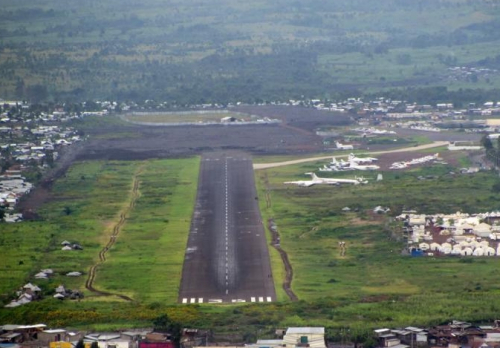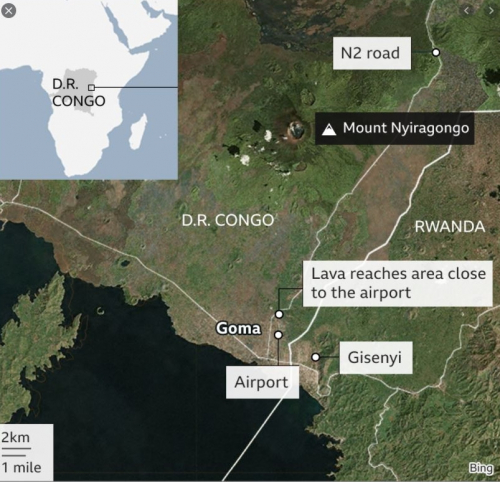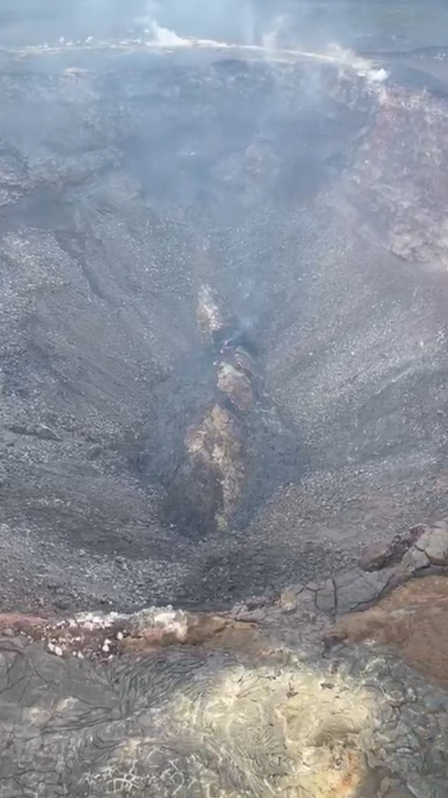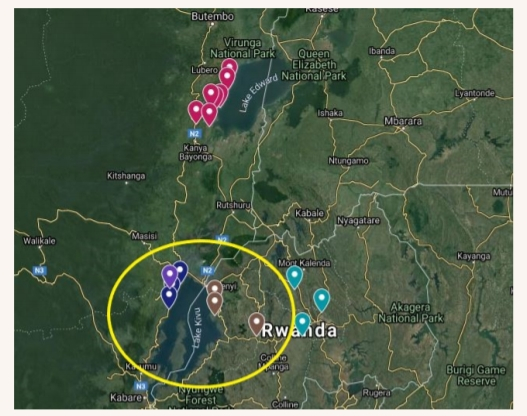The flip side of the coin
Congo's Volcanoes
How volcanic soils help produce the world's best coffees
From Hawaii to Costa Rica or Uganda to Ethiopia volcanic soils provide the vast array of properties that make growing coffee easier in certain origins than it is in others.
We are not soil experts but what we do know is that volcanic soils:
- Provide adequate drainage of water
- Support intensive use and mass cropping
- Only cover 1% of the Earth's ice-free surface
- Supply high oxygen levels to coffee roots
- Are full of plant nutrients such as potassium and phosphorus
- Pertain to the Andisols category of soils
- Are ideal soils for organic farming due to their rich nature
- & more...

The case of the Nyirangongo eruption : A threat to coffee supply chains?
Eruptions
First observed 1884 | Last in date 22 May 2021 | On average every 20 years. Recent eruption caused the displacement of 400'000 people and some infrastructural damage raising concern over water supplies and potential outbreaks of cholera.
Farmers
Our local office reports no damage at all to coffee farms. There are actually no coffee farms on the immediate slopes of the volcano and none located in-between it's crater and the city of Goma which is the axis followed by the lava flow. Populations cannot settle on the slopes of the volcano due to open vents letting volcanic gases sip through all year round.
Mills & Logistics
Quite thankfully lava from the recent eruption stopped a few hundreds of meters away from the airport of Goma. There are 4 coffee dry mills located in this neighborhood including one that serves two of Supremo's supply chains. The mills have not been affected by the earthquakes that followed the eruption but it is very likely to happen in future eruptions or with an increase in volcanic shakes happening. This would have a knock-on effect on the entire chain of logistics as mills would not be able to load coffees for exports. Another possible scenario would be to have lava reach all the way to the border point and the Rwandese city of Gisenyi, rendering all exports impossible for some time through this border post.

Lava trail cutting through the Goma airport during the 2002 eruption. It took 4 months to clear the runway.

Distance covered by the lava which erupted on the 22'nd of May 2021: 14 kms.
In summary
-
Farmers are safe and production is not at risk
-
Milling and exports are not affected this time and would it be the case one day the people of Congo will show resilience and courage to overcome any infrastructural issues, only delays to shipments might be expected
-
But things might take a different course if the Volcano decides to mingle too closely with Lake Kivu... Read further why

Is there a bigger risk than the eruptions as such ?
A bird's eye-view of the empty crater. Nyiragongo is one out of only 4 volcanoes in the world to have (read "to have had") an active lava lake in it's crater. The fact that the crater no longer hosts a lava lake could be a sign of various possible scenarios: Unlikely scenario: The volcano is going extinct. Soils will continue being fertile for hundreds of years and population won't be at risk anymore. This scenario is deemed unlikely due to the nature of the lava in this volcano , one of a very fluid nature and able to reappear without much effort needed from Mother Earth.
Second scenario
This leads to a second more likely scenario which would be the reformation of a new lava lake, as was the case after the 2002 eruption. The volcano would then remain active, posing a threat to the population.
A third scenario
Lastly, a third scenario, which some scientists are giving some good weight to : Lava has sipped back down into the earth and is finding it's way under the city of Goma and under Lake Kivu. Wanting to sound as realistic as possible and far from us the intention to ring an unnecessary alarm here is why this could become a bigger issue: Lake Kivu is located 20 Kms away from the Nyiragongo volcano. It's Methane and Carbon Dioxide contents are amongst the highest in the world for lake waters and it is know to have under water volcanic activity. This activity and the proximity with an active volcano present a risk when combined. As much as the Methane reserves of the Lake could become an economical blessing one day if tapped securely that is not the case today and the lack of monitoring of both the volcano's activity and the lake's behavior let room for a series of gruesome scenarios.
In 1986...
In 1986 Lake Nyos in Cameroun erupted with what is called a Limnic eruption. these are caused by excessive pressure exercised by seismic & volcanic activity on gas reserves underwater. Releasing thereby enough Carbon Dioxide to asphyxiate close to 2'000 people and 3'500 livestock. Both in size and in gas contents Lake Nyos is no competition to Lake Kivu and it's estimated 300 billion cubic meter of Carbon Dioxide and 30 of methane. A limnic eruption from Lake Kivu would instantly threaten the lives of cerca. 2 Million people who live on it's shores both on the Congolese and Rwandese sides. Needless to enter into further details about the consequences this would have on our beloved coffee supply chains..
Supremo Supply Chains within the risk radius of a limnic eruption

